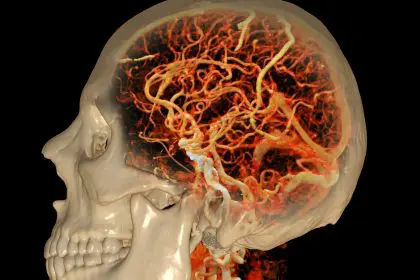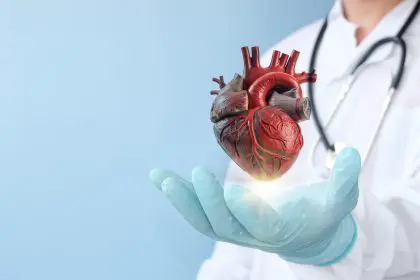The human brain sends approximately 100 billion signals every second, but a mini stroke, medically known as a transient ischemic attack (TIA), can disrupt this intricate network in mere minutes. While these episodes may seem fleeting, they serve as critical warning flares for potentially devastating health issues lurking beneath the surface. Understanding the complexity of these events becomes increasingly crucial as we age, particularly for those over 40 when cardiovascular risks naturally begin to climb.
The science behind these warning signals
When blood flow to specific regions of the brain temporarily diminishes or halts, typically due to a blood clot, a mini stroke occurs. Unlike full-blown strokes that often result in permanent damage, these temporary blockages typically resolve naturally within minutes or hours. However, this transient nature masks a sobering reality: without proper intervention, these episodes can evolve into life-altering events.
The brain’s delicate network of blood vessels requires constant, uninterrupted blood flow to function properly. During a TIA, even a brief interruption can trigger a cascade of cellular events that, while temporary, signal significant underlying cardiovascular issues requiring immediate attention. Think of it as your body’s version of a check engine light – ignoring it could lead to catastrophic failure down the road.
7 warning signs that demand immediate action
- A sudden wave of weakness ripples through one side of the body, affecting arm and leg movement. This asymmetrical weakness often catches people off guard during routine activities like holding a coffee cup or walking up stairs.
- Speech becomes tangled or understanding others turns challenging. Words might feel stuck on the tip of your tongue, or conversations suddenly sound like they’re in a foreign language.
- Vision blurs unexpectedly or doubles without explanation. Some people describe it as having a curtain pulled over one eye or seeing the world through a fogged-up window.
- An intense headache arrives without warning, different from typical tension or migraine patterns. This pain often accompanies other symptoms but can sometimes appear alone.
- Dizziness makes the world spin unexpectedly, creating a sensation of movement even while standing still. This vertigo-like experience can persist for several minutes.
- Balance becomes precarious without apparent cause, making simple tasks like walking across a room feel like navigating a tightrope.
- Facial muscles droop or feel numb, particularly on one side. This symptom might be noticed while speaking, smiling, or drinking water.
The hidden triggers behind mini strokes
The path to a mini stroke often begins years before the first symptom appears. Atherosclerosis slowly builds its plaque fortresses within arteries, while hypertension batters vessel walls like waves against a shoreline. The heart’s irregular rhythm, known as atrial fibrillation, creates perfect conditions for clot formation, while diabetes silently corrodes blood vessel health throughout the body.
Understanding these risk factors becomes crucial for prevention. Family history plays a significant role, as does age, but many risk factors remain within our control. Smoking accelerates blood vessel damage, while excessive alcohol consumption can raise blood pressure to dangerous levels. Obesity and sedentary lifestyles create additional strain on the cardiovascular system, increasing the likelihood of clot formation.
Time matters: The critical response window
When mini stroke symptoms surface, every minute counts. Modern medicine excels at preventing major strokes, but only when patients receive timely care. Emergency medical teams need precise information about symptom timing and progression to craft effective treatment strategies and prevent potential catastrophes.
The first three hours after symptom onset represent the golden window for intervention. During this time, healthcare providers can implement treatments that significantly reduce the risk of a full-blown stroke. This includes medications that prevent blood clot formation and techniques to improve blood flow to affected areas of the brain.
Building your prevention shield
Creating a robust defense against mini strokes requires a comprehensive approach. A heart-healthy diet becomes your first line of defense, with each meal offering an opportunity to protect your brain. Physical activity transforms from a simple workout into a powerful tool for maintaining healthy blood pressure and improving circulation.
Dietary choices play a crucial role in prevention. The Mediterranean diet, rich in olive oil, fish, whole grains, and vegetables, has shown particular promise in reducing stroke risk. Limiting sodium intake helps control blood pressure, while reducing processed foods decreases inflammation throughout the body.
Exercise doesn’t require marathon training to be effective. Even moderate activities like brisk walking, swimming, or cycling for 30 minutes most days of the week can significantly impact cardiovascular health. The key lies in consistency rather than intensity.
The emotional aftermath
Beyond physical symptoms, mini strokes often trigger waves of anxiety about future health. This emotional impact deserves attention and support. While some individuals navigate these waters alone, many find strength in connecting with others who understand their journey, whether through support groups or professional counseling.
The psychological impact of a TIA can manifest in various ways. Some people experience depression or anxiety about their health, while others struggle with fear of recurrence. These emotional responses can affect recovery and adherence to prevention strategies, making mental health support an essential component of comprehensive care.
The follow-up factor
Research paints a clear picture: approximately one-third of individuals who experience mini strokes face a significant risk of full strokes within the following year. However, this statistic transforms dramatically with proper medical supervision and preventive care. Modern diagnostic techniques allow healthcare providers to monitor cardiovascular health with unprecedented precision.
Regular follow-up appointments become crucial checkpoints in the journey toward prevention. These visits allow healthcare providers to adjust medications, monitor risk factors, and address any concerns before they become serious issues. Advanced imaging techniques can track changes in blood vessel health, while regular blood work helps ensure medication effectiveness.
Looking ahead: Long-term prevention strategies
Success in preventing future episodes requires a long-term commitment to health management. This includes regular blood pressure monitoring, consistent medication adherence, and lifestyle modifications that support cardiovascular health. Working closely with healthcare providers ensures that prevention strategies remain effective and appropriate as health needs change over time.
Understanding the connection between various health conditions and stroke risk allows for more comprehensive prevention efforts. Managing conditions like diabetes, high cholesterol, and obesity becomes part of the larger strategy to prevent both mini strokes and major cardiovascular events.
Making lifestyle changes stick
Creating sustainable healthy habits requires patience and persistence. Small, consistent changes often prove more effective than dramatic overhauls that prove difficult to maintain. Building a support network of family, friends, and healthcare providers can help maintain motivation and accountability in making these important lifestyle modifications.















